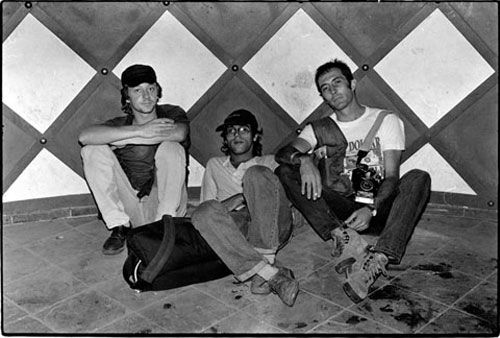→ Continued from “In Conversation with Julian Assange, Part One.”
My archive now contains over 2000 hours of interviews recorded in many different places, and I am constantly attempting to discover new rules of the game, new approaches to how an interview can work. For an interview with Hans-Peter Feldmann published initially in AnOther Magazine and then in book form, I emailed him one question per day, and each of Feldmann’s responses would take the form of an image. For my interview with Lo...
Issue #26
June 2011
With: Julieta Aranda, Brian Kuan Wood, Anton Vidokle, Hans Ulrich Obrist, Luis Camnitzer, Michael Baers, Lars Bang Larsen, Mary Walling Blackburn, Jon Rich, and Ghalya Saadawi
In the February 2009 issue of e-flux journal, Luis Camnitzer suggested in his essay “Art and Literacy” that a core problem in education (particularly for artists) can be traced back to an early stage when one is taught to read and write, in that order.1 On one level, it is simple common sense to suppose that one can only begin to write after learning how to read. But, at the same time, this ordering also takes for granted that consumption must necessarily come before production—only after you co...
View List
View Grid
8 EssaysJune 2011
Having been educated in Latin America in the fifties, I was subject to two apparently contradictory premises. On the one hand, art was thought of as a weapon for social improvement. On the other, art was seen as the territory for individual freedom. Looking back at the past half century, it seems that my generation’s main task was probably to bring together both premises in one continuum. One way of doing so was to follow the process of institutional critique that had started in the university r...
1. Setting the Stage
December 4, 2010, Murcia, Spain. The lights had come on in the auditorium following a screening of As the Academy Turns, Tion Ang’s telenovela-style exposé of machinations in the contemporary art academy, and it was time for the obligatory Q&A. The audience, professors of art and their PhD students, cautiously assayed questions concerning methodology and budget, but Ang, in the grips of an apparent somnambulism, hazarded vaguely mechanical answers and disavowed consci...
1. After the War
The writings of Charles Fourier (1772–1837) are a glorious fuck you to all that exists. Yet they are neither punk’s provocation nor the apodictic objectivity of Marxian dialectics, but an enculage of civilization through the filigree work of total world reinvention.
Marx complained that Fourier’s utopia was all in his mind, that he was obliged to construct a new society “with elements supplied by his brain” because capitalist production was underdeveloped when he wrote.1 B...
1. Mental Institution
In the annals of the Arkansas Lunatic Asylum, the very first patient arrives several days before the facility—a multi-storied, Victorian brick edifice—officially opens in March 1883. The state’s first and only public zoo is built next to the asylum in 1926, and at first it houses exactly two animals: an abandoned timber wolf and a circus-trained bear, whose calls carry into the asylum at night.
The bear and the wolf. We’re suckers for things coming in twos, for n...
In March 1993, Kevin Carter took a photo of a starving Sudanese child crawling towards a UN relief camp less than a mile away. A few meters from the weary child stood a vulture, waiting for her death to begin his meal. Birds also must eat, and in southern Sudan they were eating because humans were not. Kevin Carter stood across from the vulture, lit a cigarette, and took his shot. Twenty minutes passed and the bird didn’t move, waiting in its place as the child continued to struggle towards the ...
In 1971, a solo exhibition by German artist Hans Haacke, planned to take place at the Guggenheim in New York, was censored due to the artist’s intention to exhibit a work titled Shapolsky et al., Manhattan Real Estate Holdings, a Real Time Social System, as of May 1, 1971. One of the most discussed works of the 1970s, the piece brings together Haacke’s research on slumlord Harry Shapolsky’s real estate holdings in Manhattan. A series of over 140 photographs of run-down blocks of residential buil...







